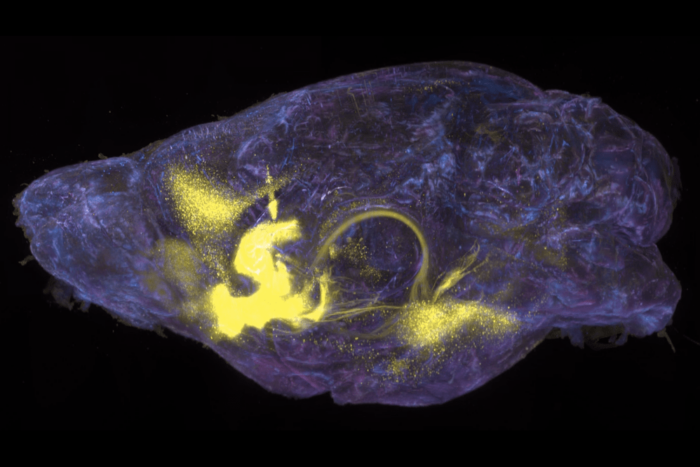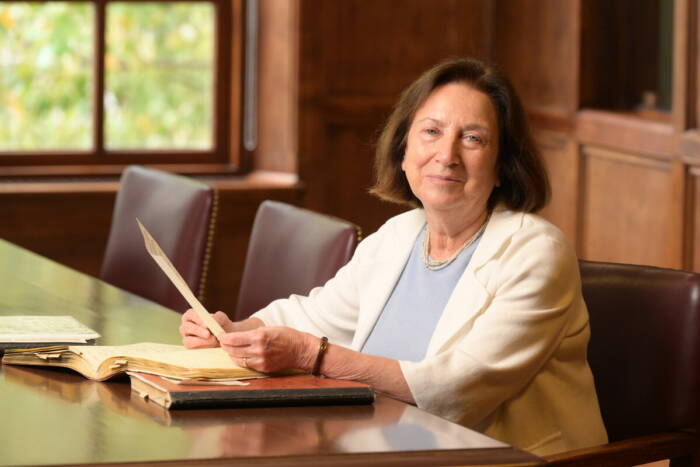Interdisciplinary retreats bring Rockefeller labs together on research
by BRETT NORMAN
Last month, the heads of 11 Rockefeller laboratories and researchers working in them gathered at a conference center in Tarrytown, New York, for a weekend retreat focused on genome integrity. From mass spectroscopy to cell cycle and telomere maintenance studies, the scientists shared their expertise, hoping to gain insight from different perspectives that could inform work in their respective fields or launch new collaborations.

The Anderson Cancer Center Retreat, chaired by Leon Hess Professor Titia de Lange, stems from one of the planks of Rockefeller’s strategic plan, developed after President Paul Nurse arrived in 2003, to foster more interaction among the diverse labs at the university and seed new collaborations. It’s one of four ongoing or planned retreats, each organized to converge different perspectives on their topics: genome integrity, chemical and structural biology, neuroscience and infectious diseases. Funding for the retreats comes primarily from gifts donated to enhance collaborations. The schedules include time for presentations and poster sessions, as well as meals and social events that allow scientists to talk informally.
“Paradigm-changing discoveries happen at intersecting fields of research,” Dr. Nurse says. “Through this program of regular retreats, which began several years ago but is now fully up and running, we have sought to foster more frequent interactions with scientists in different areas of research.”
According to researchers who attended the retreat at the Tarrytown House Estate and Conference Center last month, it’s been effective. “Scientifically, I’ve gotten more out of this retreat than I have out of any other single thing at Rockefeller, apart from lab work,” says Lance Langston, a postdoctoral fellow who attended the first Anderson retreat in 2007 and has returned every year since. “I think it’s truly valuable. Even if you don’t end up with direct collaborations per se, you find new ways to improve what you’re doing from different perspectives, things you wouldn’t necessarily think of until you get outside of your box.”
Dr. Langston, who studies the DNA replication fork in Michael O’Donnell’s lab, works on the same floor of Weiss Research Building as Beatrix Ueberheide, a postdoctoral associate in Brian T. Chait’s lab. Although they run into each other in the halls frequently, neither knew exactly what the other person studied until they heard the research presentations at the retreat. “You get completely different perspectives on your work, and that’s powerfully motivating, questions that would not come from people in your own field,” Ueberheide says.
The Anderson retreat was the first of this academic year. It will be followed in late spring by the Pels Family Chemical and Structural Biology Retreat, chaired by Howard C. Hang, and the Neuroscience Retreat, chaired by Leslie B. Vosshall. The newest addition is the Infectious Disease Biology Retreat, which will debut in September 2011, chaired by F. Nina Papavasiliou. The Neuroscience Retreat is the largest with about 150 attendees, about twice the size of the others, but each includes participants from at least 10 labs at Rockefeller. In total, more than 70 percent of the labs on campus will have participated in these retreats, Dr. Nurse says.
“Getting people away from their laboratories and out of their routines is what makes these retreats work,” says Dr. Nurse, who has attended all four annual Anderson retreats held since 2007. “Once researchers learn about what their neighbors are working on, they often see opportunities for furthering their work that would never have been considered otherwise.”


